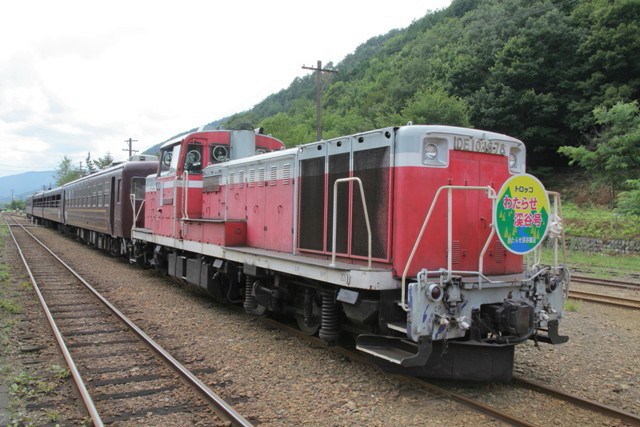
EMU JR East E2-N series stands at Tokyo Station on the Nagano Shinkansen
Tokyo Railway Labyrinth had its second anniversary this month. I thank all my blog readers for supporting me over the last two years.
When I started the blog, I lived in Jakarta, Indonesia. At that time, my home country, Japan was facing difficulties, including tsunami and nuclear power plant disasters that followed a giant earthquake. Japan seemed temporally lost. Fortunately, most of the railways were saved by the earthquake resistant construction. But, some routes are still suspended due to the damage caused by the tsunami and the nuclear power plant problem.
In commemoration of the second anniversary of my blog, I am going to show you a train with the number "2" in the name... the EMU E"2"-N series. Is it a bit of a stretch?
The EMU JR East E2-N series is the Nagano Shinkansen train. It is the brother of the E2-J series, which is the main fleet on the Tohoku Shinkansen. The E2-N series is operated with a maximum speed of 260km/hour; meanwhile the E2-J is designed to run at 275km/hour. The maximum speed of the E2-N is lower than that of the E2-J; however, the E2-N can run nimbly up a 30 per mill of steep incline at Usui Pass at high speed.
For your information, the largest outward difference between E2-N and E2-J series is the color of the stripe on their bodies. The E2-N series has a red colored stripe, while the E2-J has a pink colored one (see my blog on November 7th, 2012).
When I started the blog, I lived in Jakarta, Indonesia. At that time, my home country, Japan was facing difficulties, including tsunami and nuclear power plant disasters that followed a giant earthquake. Japan seemed temporally lost. Fortunately, most of the railways were saved by the earthquake resistant construction. But, some routes are still suspended due to the damage caused by the tsunami and the nuclear power plant problem.
In commemoration of the second anniversary of my blog, I am going to show you a train with the number "2" in the name... the EMU E"2"-N series. Is it a bit of a stretch?
The EMU JR East E2-N series is the Nagano Shinkansen train. It is the brother of the E2-J series, which is the main fleet on the Tohoku Shinkansen. The E2-N series is operated with a maximum speed of 260km/hour; meanwhile the E2-J is designed to run at 275km/hour. The maximum speed of the E2-N is lower than that of the E2-J; however, the E2-N can run nimbly up a 30 per mill of steep incline at Usui Pass at high speed.
For your information, the largest outward difference between E2-N and E2-J series is the color of the stripe on their bodies. The E2-N series has a red colored stripe, while the E2-J has a pink colored one (see my blog on November 7th, 2012).
EMU JR East E2-N series stands at Tokyo Station on the Nagano Shinkansen
















































